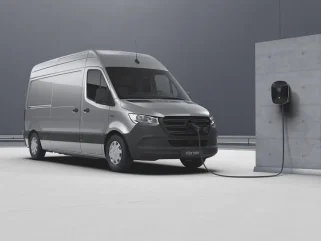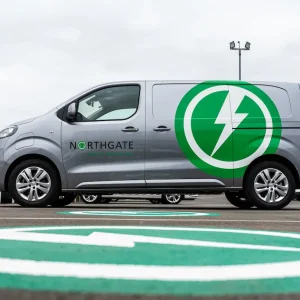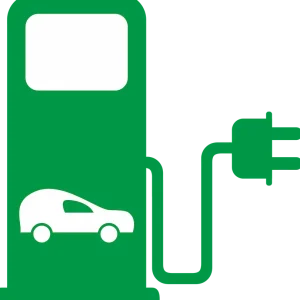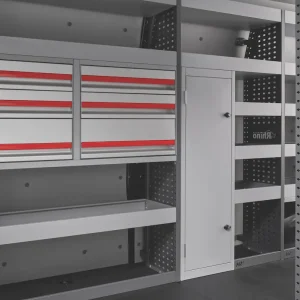
Back in the early 2010s forecasts for electric van residual values could be harsh, with an unknown level of demand, the potential for battery and range obsolescence, not to mention anxiety surrounding the life of the battery pack. Move the clock on 12 or 13 years, have things changed? Maybe a little, but some of those factors remain.
The new electric van market is tough. The government’s ZEV mandate demands that 10% of all new vans registered in 2024 are to be zero emission. As of the end of August, only three manufacturers had achieved this, the others having only four months to catch up with some, such as Ford (which is hovering around the 1% mark) having what seems to be an insurmountable task.
The reasons regularly cited for low demand? Cost, range and payload issues together with a weak public charging structure and a lack of home charging facilities for company van users due to physical constraints and restrictions. These factors apply to the used electric van market which is also weak. With little apparent demand from customers, most used traders shun stocking used electric vans until they reach a very low price point, at which juncture they might be tempted to risk a purchase from auctions or other outlets. The only exception might be where the dealer is located close to, or within, a low or zero-emission zone, where customers can see some financial benefit that outweighs the drawbacks.
New model investment
With the current 2035 deadline for all new vans to be carbon neutral, manufacturers have invested heavily in developing electric vans with the best payload and range possible, all hoping to have the edge on the competition to gain a larger slice of the EV pie. This has meant the vehicles cost more to manufacture than an equivalent ICE model, and naturally they will seek to recover this cost at the point of sale. What has happened is that customers have resisted paying a substantial premium, and to avoid stockpiles of unsold vans, the transaction price (not necessarily the retail, or list price) has gradually dropped. In recent weeks, there have been advertised examples of price parity between an electric van and its ICE sibling, and at the time of writing, there are rumours of colossal discounts on one van from a major manufacturer. These price reductions negatively affect the value of used vehicles, as we saw with Tesla cars two or three years ago.
With the ever-present pressure from the ZEV mandate (that 10% figure increases every year, and by 2030 70% will be the required figure), manufacturers are likely to continue to market electric vans aggressively, using price as a tool, and balancing losing money on every vehicle sold with the £9,000 per unit shortfall fine. It’s likely that as year-end approaches and the level of underperformance becomes apparent, the price war will intensify, culminating in some last minute pre-registration activity.
So, where does this leave those who need to manage future risk, such as leasing companies? Used van values are dictated by supply and demand – too much supply and not enough demand? Prices fall. Conversely, if vans are hard to find and the demand is there, prices will rise. Let’s take a crystal ball to, say, three or four years hence. Assumptions will have to be made and these could well be inaccurate.
There’s a school of thought that manufacturers will tactically reduce the availability of ICE vans so customers are forced to buy electric, but this could just mean a boost in the value of used diesel vans. We’ll assume that transaction values of new EV’s will stay as they are over the next year or so. Currently, only 5% of registrations are electric and this, despite the ZEV mandate, is only expected to rise slowly – meaning that numbers, and therefore the supply of used electric vans in three or four years’ time will be relatively low – potentially good news for values.
Considering demand
Where do we see the demand for these used, de-fleeted electric vans? Although supply levels at present are low due to the negligible number of registrations in the last few years, demand is even lower, leading to stagnation, vans taking time to sell and at low prices. Is there likely to be a change in sentiment from the typical used van customer in the future? My guess is yes, but it’s going to take longer than our sample 36–48 month time window. We’re likely to see a gradual rise in supply but with the curve of demand not keeping pace. I would estimate a minimum of five years before we see any chance of a balance being achieved and realistic used values being gained by vendors and the trade.
But there are other threats too, as with any emerging technology. The capabilities of electric vans are likely to improve. At the moment, the best performing electric vans have a range of over 200 miles under test conditions. But, if in a few years, the standard is 400, or even greater, will a former used buyer be more tempted to pay more for a newer van, the tool being more suitable for their work? We’ve already seen this with early versions of the Mercedes-Benz eSprinter, a van which had an official range of less than 100 miles, and in practice more like 60. There is zero interest for these on the used market, the van now being obsolete.
The same goes for payload. Currently, if a van operator needs to carry upwards of 1,300kg in their diesel van, they have plenty to choose from. But to get the same capacity from an electric van, they will have to source one with a GVM of 4.25t. The government has introduced a driving licence dispensation, but there are some other implications which make operating an electric van at this weight more restrictive, and potentially costly. If advances in battery technology see competitive payloads at 3.5t GVM, unless legislation changes, it’s hard to see a van user opting for a used one at 4.25t, instead of paying a premium for a newer van with fewer restrictions.
The outlook isn’t great, but it’s not set in stone. Should the government and industry get its act together and make operating an electric van a no brainer for the majority, then a completely different picture to the slightly grim one envisaged here will become apparent.
Supported by:






